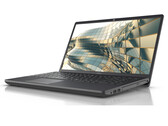
Fujitsu Lifebook A3510 review: An affordable office laptop with a maintenance flap
Intel Core i3-1005G1 | Intel UHD Graphics G1 (Ice Lake 32 EU) | 15.60" | 1.8 kg
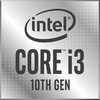
The Intel Core i3-1005G1 is a low-power, Ice Lake family processor (SoC) featuring 2 cores, 4 threads, 4 MB of L3 cache and the UHD G1 (32 EUs) iGPU. It saw the light of day in 2019. The chip is designed for use in highly portable laptops of the more affordable flavour; the CPU cores run at 1.2 GHz to 3.4 GHz which is not a lot.
Architecture & Features
Ice Lake family chips are powered by Sunny Cove CPU cores.The latter aim to do what Palm Cove cores (that we never really got a chance to get a taste of) were expected to do, delivering a double-digit IPC uplift over the venerable Skylake architecture thanks to a range of small improvements across the board including scheduler improvements, larger caches and buffers, and support for new instruction sets.
Thunderbolt 3 support is built right into the Core i3 (meaning it has several PCIe 3 lanes exclusive to Thunderbolt devices, reducing the number of additional components required for Thunderbolt to work) and so is Intel CNVi Wi-Fi 6 support (making it easier for Intel to sell its proprietary WLAN cards to laptop makers). The Core i3-1005G1 also has the DL Boost and GNA features for applications centered around machine learning.
The 4 GT/s bus is indicative of a consumer-grade chip, since CPUs for gaming laptops and portable workstations usually employ the faster 8 GT/s bus. RAM support is nothing to sneeze at, at up to DDR4-3200 or LPDDR4-3733. NVMe SSDs are supported, with data transfer rates limited to 3.9 GB/s (this is what four PCIe 3 lanes are good for). SATA drives and even eMMC chips are also natively supported here.
This is not a user-replaceable CPU, as it gets permanently soldered to the motherboard (BGA1526 socket interface).
OS support is limited to 64-bit Windows 10 and 64-bit Windows 11, as well as many Linux distros.
Performance
The average 1005G1 in our database is a disappointment, its multi-thread benchmark scores only matching those of Intel's Core i5-7267U and AMD's Ryzen 3 2300U. This is unfortunately in line with what we've been seeing from other Ice Lake family processors; they tend to be held back by their comparatively low clock speeds. While not as slow as many Celerons and Pentiums, this Core i3 will still look out of place in anything but the most affordable laptops and mini-PCs.
With its long-term CPU power limit of 25 W, the Lenovo V17-IIL 82GX008TGE is among the fastest laptops built around this Core i3 that we know of.
Graphics
The Core i3-1005G1 features the UHD Graphics G1 (32 EUs) graphics adapter running at up to 900 MHz. This DX12-compatible iGPU is not much faster than the dated UHD 620 graphics solution, making it almost useless to gamers, and there are no cutting-edge features such as ray tracing support to be found here, either. The list of supported resolutions tops out at 5120 x 3200, and there is no hardware AV1 codec support meaning such a video will be SW-decoded with rather low energy efficiency. The usual HEVC, AVC and VP9 options are supported, thankfully.
The G1 will drive up to 3 monitors simultaneously, provided the system has the outputs required. Higher-end Ice Lake chips are equipped with the G4 (48 EUs) or the G7 (64 EUs) adapters that are significantly faster.
Power consumption
The Core i3 has a 15 W default TDP (also known as the long-term power limit), a value that laptop makers are allowed to reduce slightly - 13 W being the lower limit - resulting in lower clock speeds and lower performance. Either way, that's a tad too high to allow for passively cooled designs.
The SoC is built with Intel's second-gen 10 nm process (not "10 nm SuperFin" or "Intel 7") for average, as of late 2022, energy efficiency.
| Codename | Ice Lake-U | ||||||||||||||||||||||||
| Series | Intel Ice Lake | ||||||||||||||||||||||||
Series: Ice Lake Ice Lake-U
| |||||||||||||||||||||||||
| Clock Rate | 1200 - 3400 MHz | ||||||||||||||||||||||||
| Level 1 Cache | 96 KB | ||||||||||||||||||||||||
| Level 2 Cache | 1 MB | ||||||||||||||||||||||||
| Level 3 Cache | 4 MB | ||||||||||||||||||||||||
| Number of Cores / Threads | 2 / 4 | ||||||||||||||||||||||||
| Power Consumption (TDP = Thermal Design Power) | 15 Watt | ||||||||||||||||||||||||
| Manufacturing Technology | 10 nm | ||||||||||||||||||||||||
| Max. Temperature | 100 °C | ||||||||||||||||||||||||
| Socket | BGA1526 | ||||||||||||||||||||||||
| Features | DDR4-3200/LPDDR4-3733 RAM, PCIe 3, 4 GT/s bus, DL Boost, GNA, MMX, SSE, SSE2, SSE3, SSSE3, SSE4.1, SSE4.2, AVX, AVX2, AVX-512, BMI2, ABM, FMA, ADX, VMX, SMEP, SMAP, EIST, TM1, TM2, Hyper-Threading, Turbo, SST, AES-NI, RDRAND, RDSEED, SHA, SGX | ||||||||||||||||||||||||
| GPU | Intel UHD Graphics G1 (Ice Lake 32 EU) (300 - 900 MHz) | ||||||||||||||||||||||||
| 64 Bit | 64 Bit support | ||||||||||||||||||||||||
| Architecture | x86 | ||||||||||||||||||||||||
| Announcement Date | 05/29/2019 | ||||||||||||||||||||||||
| Product Link (external) | ark.intel.com | ||||||||||||||||||||||||

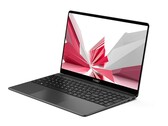
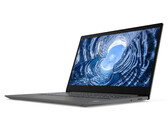
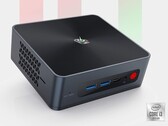
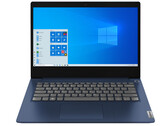
Dell XPS 13 7390 2-in-1 Core i3: Intel UHD Graphics G1 (Ice Lake 32 EU), 13.40", 1.3 kg
Review » Hot Ice: Dell XPS 13 7390 2-in-1 Core i3 Laptop Review
Acer Aspire 5 A514-53-3970: Intel UHD Graphics G1 (Ice Lake 32 EU), 14.00", 1.7 kg
External Review » Acer Aspire 5 A514-53-3970
Medion Akoya E14409, i3-1005G1: Intel UHD Graphics G1 (Ice Lake 32 EU), 14.00", 1.6 kg
External Review » Medion Akoya E14409, i3-1005G1
Asus VivoBook 15 F515JA-BR1840: Intel UHD Graphics G1 (Ice Lake 32 EU), 15.60", 1.8 kg
External Review » Asus VivoBook 15 F515JA-BR1840
Allview Allbook i: Intel UHD Graphics G1 (Ice Lake 32 EU), 15.60", 2 kg
External Review » Allview Allbook i
Fujitsu LifeBook A3510-FPC04905BP: Intel UHD Graphics G1 (Ice Lake 32 EU), 15.60", 2 kg
External Review » Fujitsu LifeBook A3510-FPC04905BP
Asus VivoBook 15 F512JA-AS34: Intel UHD Graphics G1 (Ice Lake 32 EU), 15.60", 1.8 kg
External Review » Asus VivoBook 15 F512JA-AS34
Asus F415JA-BV393T: Intel UHD Graphics G1 (Ice Lake 32 EU), 14.00", 1.6 kg
External Review » Asus F415JA-BV393T
Acer Aspire 3 A317-52-36L5: Intel UHD Graphics G1 (Ice Lake 32 EU), 17.30", 2.7 kg
External Review » Acer Aspire 3 A317-52-36L5
Acer Aspire 5 A515-55-35SE: Intel UHD Graphics G1 (Ice Lake 32 EU), 15.60", 1.8 kg
External Review » Acer Aspire 5 A515-55-35SE
Asus VivoBook 15 F515JA-AH31: Intel UHD Graphics G1 (Ice Lake 32 EU), 15.60", 1.8 kg
External Review » Asus VivoBook 15 F515JA-AH31
HP 240 G8, i3-1005G1: Intel UHD Graphics G1 (Ice Lake 32 EU), 14.00", 1.5 kg
External Review » HP 240 G8, i3-1005G1
Asus VivoBook 15 R565J: Intel UHD Graphics G1 (Ice Lake 32 EU), 15.60", 1.8 kg
External Review » Asus VivoBook 15 R565J
Asus VivoBook 15 F515JA-BR097T: Intel UHD Graphics G1 (Ice Lake 32 EU), 15.60", 1.8 kg
External Review » Asus VivoBook 15 F515JA-BR097T
Asus VivoBook 15 R543MA-GQ1264: Intel UHD Graphics G1 (Ice Lake 32 EU), 15.60"
External Review » Asus VivoBook 15 R543MA-GQ1264
Lenovo IdeaPad 3 15IIL05-4GSP: Intel UHD Graphics G1 (Ice Lake 32 EU), 15.60", 1.9 kg
External Review » Lenovo IdeaPad 3i 15IIL05-4GSP
Lenovo IdeaPad Flex 5 15IIL05-81X3002BMH: Intel UHD Graphics G1 (Ice Lake 32 EU), 15.60", 1.8 kg
External Review » Lenovo IdeaPad Flex 5 15IIL05-81X3002BMH
Dell Vostro 15 3501: Intel UHD Graphics G1 (Ice Lake 32 EU), 15.60", 1.9 kg
External Review » Dell Vostro 15 3501
HP 340S G7, i3-1005G1: Intel UHD Graphics G1 (Ice Lake 32 EU), 14.00", 1.4 kg
External Review » HP 340S G7, i3-1005G1
Lenovo IdeaPad Flex 5 15IIL05-81X3007XGE: Intel UHD Graphics G1 (Ice Lake 32 EU), 15.60", 1.8 kg
External Review » Lenovo IdeaPad Flex 5 15IIL05-81X3007XGE
HP 14s-dq1931nd: Intel UHD Graphics G1 (Ice Lake 32 EU), 14.00", 1.5 kg
External Review » HP 14s-dq1931nd
Asus Vivobook X509JA-EJ371T: Intel UHD Graphics G1 (Ice Lake 32 EU), 15.60", 1.9 kg
External Review » Asus Vivobook X509JA-EJ371T
Asus ZenBook 14 UX425JA, i3-1005G1: Intel UHD Graphics G1 (Ice Lake 32 EU), 14.00", 1.1 kg
External Review » Asus ZenBook 14 UX425JA, i3-1005G1
HP 14s-dq1040ns: Intel UHD Graphics G1 (Ice Lake 32 EU), 14.00", 1.5 kg
External Review » HP 14s-dq1040ns
HP 17-by3099ng: Intel UHD Graphics G1 (Ice Lake 32 EU), 17.30", 2.4 kg
External Review » HP 17-by3099ng
Lenovo IdeaPad 3 15IIL05-81WE00KYGE: Intel UHD Graphics G1 (Ice Lake 32 EU), 15.60", 1.9 kg
External Review » Lenovo IdeaPad 3 15IIL05-81WE00KYGE
HP 15s-fq1111tu: Intel UHD Graphics G1 (Ice Lake 32 EU), 15.60", 1.7 kg
External Review » HP 15s-fq1111tu
HP 15s-fq1075ns: Intel UHD Graphics G1 (Ice Lake 32 EU), 15.60", 1.7 kg
External Review » HP 15s-fq1075ns
Asus VivoBook 15 S512JA-BR192T: Intel UHD Graphics G1 (Ice Lake 32 EU), 15.60", 1.6 kg
External Review » Asus VivoBook 15 S512JA-BR192T
Lenovo Ideapad S145-15IIL-81W800BMGE: Intel UHD Graphics G1 (Ice Lake 32 EU), 15.60", 1.9 kg
External Review » Lenovo Ideapad S145-15IIL-81W800BMGE
Lenovo IdeaPad 3 14IIL05: Intel UHD Graphics G1 (Ice Lake 32 EU), 14.00", 1.6 kg
External Review » Lenovo IdeaPad 3 14IIL05
Acer Aspire 5 A514-53-30VS: Intel UHD Graphics G1 (Ice Lake 32 EU), 14.00", 1.6 kg
External Review » Acer Aspire 5 A514-53-30VS
Asus VivoBook X409JA i3-1005G1: Intel UHD Graphics G1 (Ice Lake 32 EU), 14.00", 1.5 kg
External Review » Asus VivoBook X409JA i3-1005G1
Asus VivoBook 15 R521JA-EJ113T: Intel UHD Graphics G1 (Ice Lake 32 EU), 15.60", 1.9 kg
External Review » Asus VivoBook 15 R521JA-EJ113T
HP 14s-dq1001ns: Intel UHD Graphics G1 (Ice Lake 32 EU), 14.00", 1.5 kg
External Review » HP 14s-dq1001ns
HP Pavilion 13-an1033tu: Intel UHD Graphics G1 (Ice Lake 32 EU), 13.30", 1.3 kg
External Review » HP Pavilion 13-an1033tu
HP 14s-dq1002ns: Intel UHD Graphics G1 (Ice Lake 32 EU), 14.00", 1.5 kg
External Review » HP 14s-dq1002ns
HP 14s-DQ1013TU: Intel UHD Graphics G1 (Ice Lake 32 EU), 14.00", 1.5 kg
External Review » HP 14s-DQ1013TU
HP 15s-fq1013ns: Intel UHD Graphics G1 (Ice Lake 32 EU), 15.60", 1.7 kg
External Review » HP 15s-fq1013ns
Lenovo Ideapad S340-14IIL-81VV0032GE: Intel UHD Graphics G1 (Ice Lake 32 EU), 14.00", 1.6 kg
External Review » Lenovo Ideapad S340-14IIL-81VV0032GE
Acer Swift 3 SF314-57, i3-1005G1: Intel UHD Graphics G1 (Ice Lake 32 EU), 14.00", 1.2 kg
External Review » Acer Swift 3 SF314-57, i3-1005G1
Fujitsu Lifebook A3510 (FPC04905BP): Intel UHD Graphics G1 (Ice Lake 32 EU), 15.60", 1.8 kg
» Fujitsu Lifebook A3510: With Power Delivery, maintenance cover, and DVD burner
Lenovo V17-IIL 82GX008TGE: Intel UHD Graphics G1 (Ice Lake 32 EU), 17.30", 2.2 kg
» Lenovo V17-IIL: Low operating noise, low heat development, up to 36 GB RAM
» Mobile CPU Comparison
Comparison of all mobile CPU series
» Mobile Processors - Benchmarklist
Benchmarklist of all known CPUs that are used in laptops (desktop and laptop CPUs)
Top 10 Laptops
Multimedia, Budget Multimedia, Gaming, Budget Gaming, Lightweight Gaming, Business, Budget Office, Workstation, Subnotebooks, Ultrabooks, Chromebooks
under 300 USD/Euros, under 500 USD/Euros, 1,000 USD/Euros, for University Students, Best Displays
Top 10 Smartphones
Smartphones, Phablets, ≤6-inch, Camera Smartphones